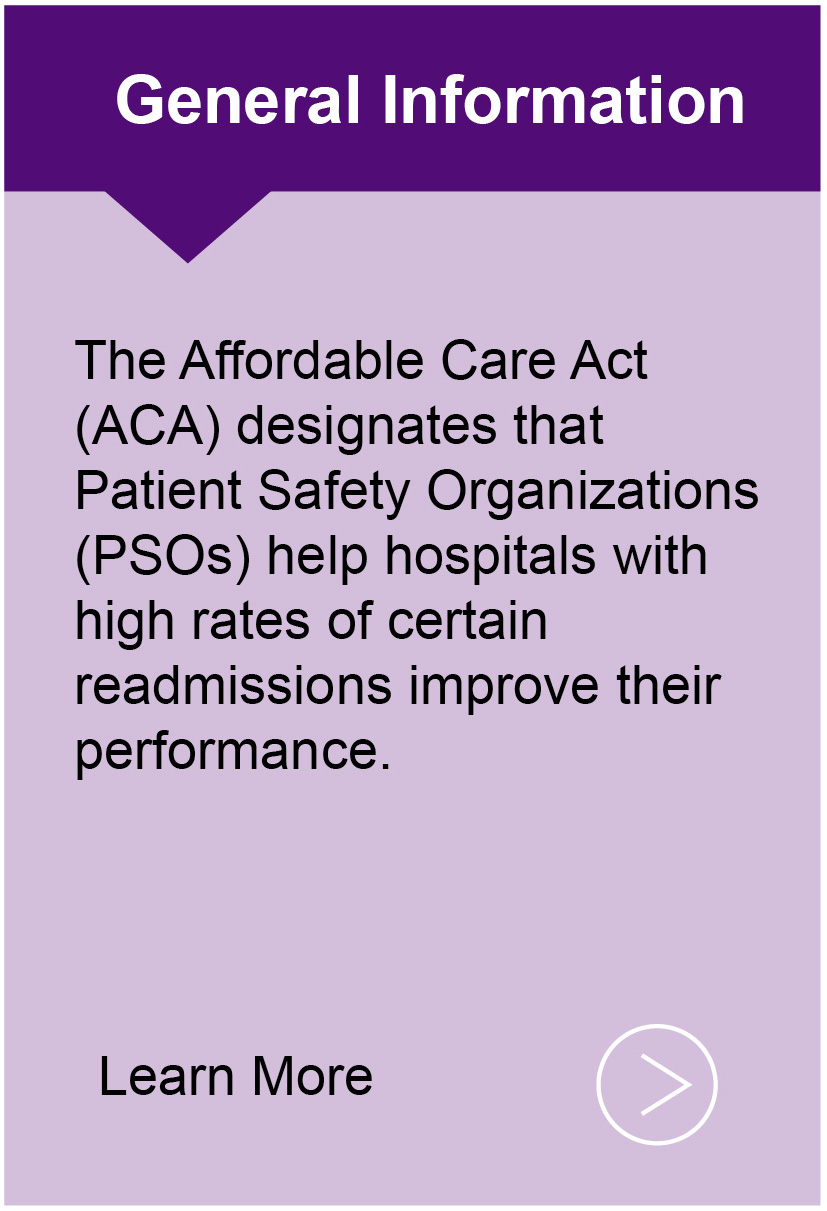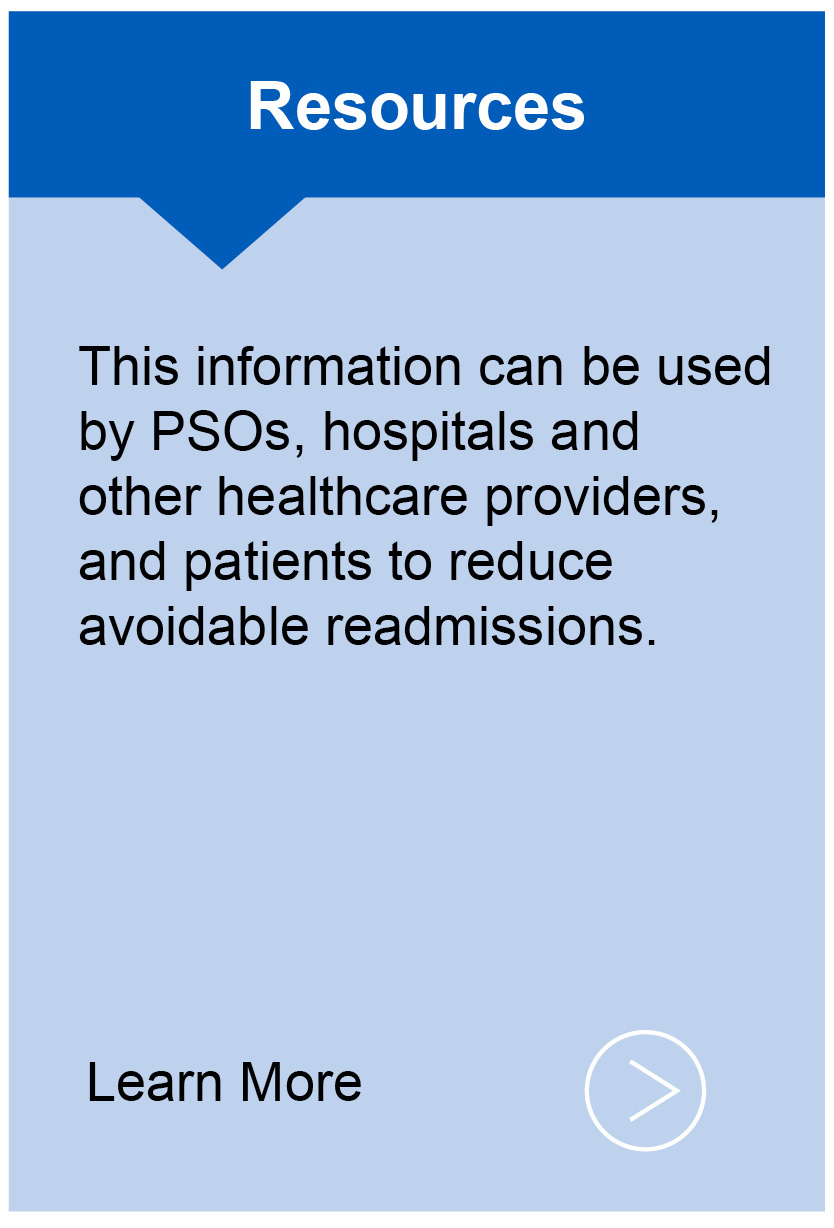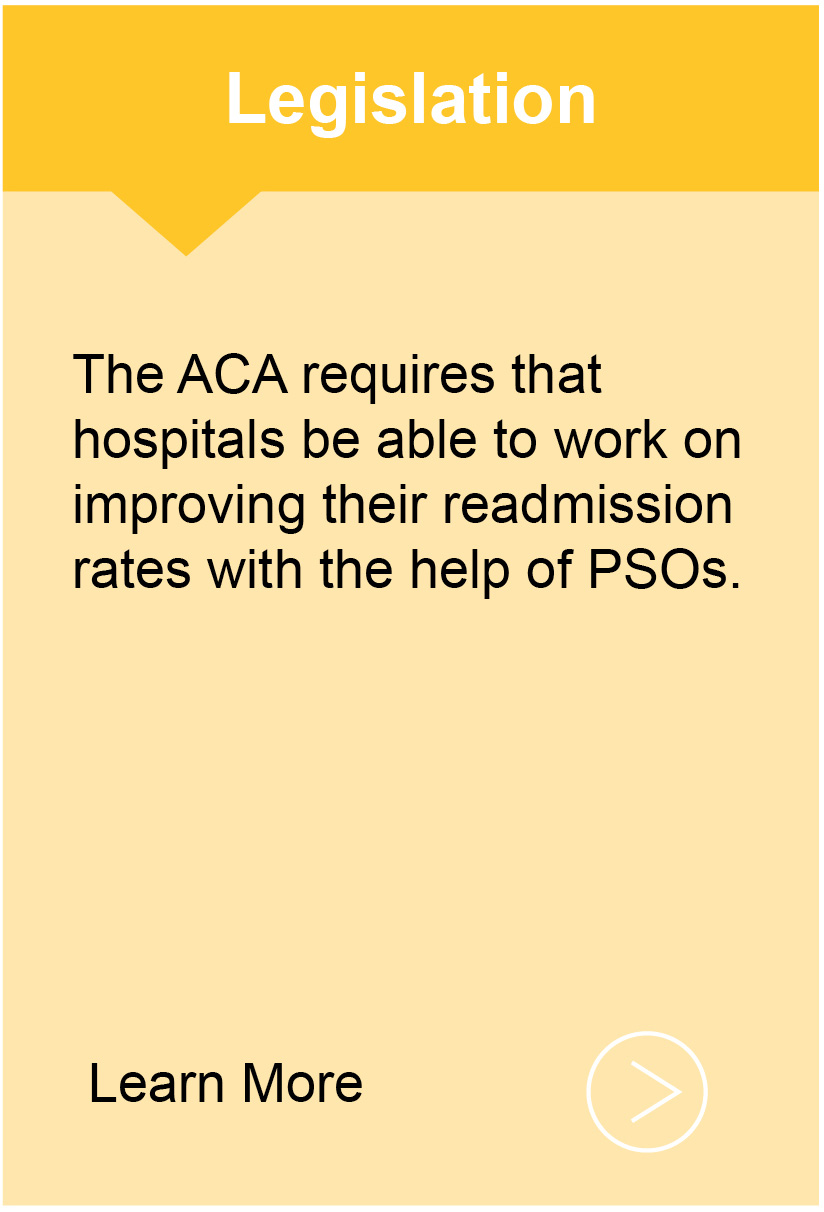Reducing Avoidable Hospital Readmissions: The Role of the Patient Safety Organization (PSO)
What is the PSO's Role in Helping Hospitals Reduce Avoidable Readmissions?
The Patient Protection and Affordable Care Act (ACA) designates that PSOs help hospitals with high rates of avoidable readmissions improve their performance. The ACA also calls for the Department of Health and Human Services (HHS) to provide a program to support PSOs in this work. As part of this program, the information presented here is designed for PSOs that wish to assist hospitals in reducing avoidable readmissions.
- Learn more about this provision in the ACA.
- Find a PSO.
Which Hospitals are "Eligible" To Work With a PSO on Readmissions?
Section 399KK of the ACA defines an 'eligible hospital' as a "hospital that the Secretary determines has a high rate of risk-adjusted readmissions for the conditions described in section 1886(q)(8)(A) of the Social Security Act and has not taken appropriate steps to reduce such readmissions and improve patient safety, as evidenced through historically high rates of readmissions as determined by the Secretary."
The Centers for Medicare & Medicaid Services (CMS) determines hospital readmissions rates. However, all hospitals, not only those considered 'eligible', may work with a PSO on readmissions if they so choose. Hospitals need only determine which PSOs offer services that will meet their needs in improving patient safety and reducing avoidable readmissions.
Section 3025 of the Affordable Care Act added section 1886(q) to the Social Security Act, establishing the Hospital Readmissions Reduction Program, which is a Medicare value-based purchasing program that encourages hospitals to improve communication and care coordination to better engage patients and caregivers in discharge plans and, in turn, reduce avoidable readmissions. The program supports the national goal of improving health care for Americans by linking payment to the quality of hospital care. The regulations that implement this provision are in subpart I of 42 CFR part 412 (§412.150 through §412.154). Please visit the Hospital Readmissions Reduction Program website at CMS.gov for more information.
Provision in the Affordable Care Act Describing the Role of PSOs in Helping Hospitals Improve Readmission Rates
The following section of the Affordable Care Act (ACA) describes the PSO program's role in helping eligible hospitals to improve their readmission rates. Read the full text of the ACA.
SEC. 399KK. QUALITY IMPROVEMENT PROGRAM FOR HOSPITALS WITH A HIGH SEVERITY ADJUSTED READMISSION RATE.
- Establishment.—
- In general.—Not later than 2 years after the date of enactment of this section, the Secretary shall make available a program for eligible hospitals to improve their readmission rates through the use of patient safety organizations (as defined in section 921 (4)).
- Eligible hospital defined.—In this subsection, the term 'eligible hospital' means a hospital that the Secretary determines has a high rate of risk-adjusted readmissions for the conditions described in section 1886(q)(8)(A) of the Social Security Act and has not taken appropriate steps to reduce such readmissions and improve patient safety, as evidenced through historically high rates of readmissions as determined by the Secretary.
- Risk adjustment.—The Secretary shall utilize appropriate risk-adjustment measures to determine eligible hospitals.
- Report to the Secretary.—As determined appropriate by the Secretary, eligible hospitals and patient safety organizations working with those hospitals shall report to the Secretary on the processes employed by the hospital to improve readmission rates and the impact of such processes on readmission rates.
Contact Us
For questions about finding a PSO to help a hospital improve care and reduce avoidable readmissions, contact the PSO Program at pso@ahrq.hhs.gov.
Resources and Tools to Improve Discharge and Transitions of Care and Reduce Avoidable Readmissions
Agency for Healthcare Research and Quality (AHRQ)
AHRQ supports research on the quality and safety of the hospital discharge process and care transitions. Improvements in these areas can lead to reductions in potentially avoidable readmissions. AHRQ has developed resources and tools—based on this research—that PSOs, hospitals and other healthcare providers, and patients can use to improve patient safety and reduce avoidable readmissions.
CMS
Quality Improvement Organizations (QIOs) are regional organizations that work under contract to CMS to improve care for Medicare beneficiaries. They are not PSOs. Some QIOs are helping selected communities in their regions to collaborate on efforts to reduce hospital readmissions. For more information about QIOs, visit: https://www.cms.gov/medicare/quality/quality-improvement-organizations.





